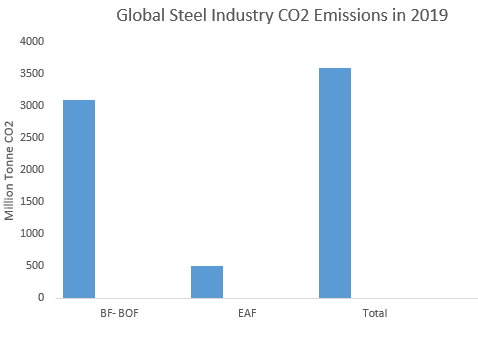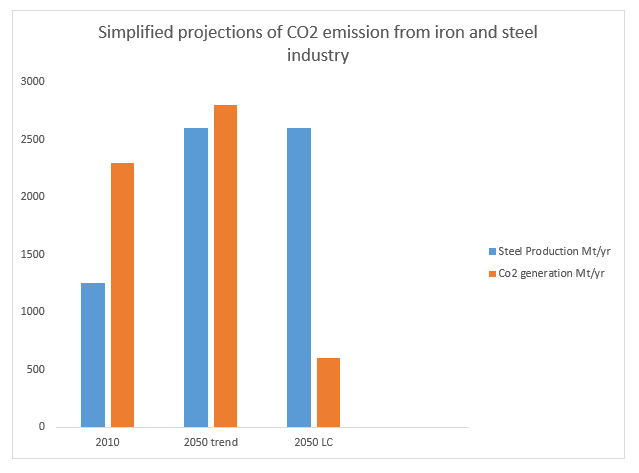DeKarbonizacja Przemysłu Stalowego: Wyzwania i Strategie Inwestycyjne
Wprowadzenie
Jako jeden z najważniejszych materiałów inżynieryjnych i budowlanych, stal jest jednym z podstawowych elementów współczesnego społeczeństwa i znajduje zastosowanie w wielu aspektach naszego życia codziennego. Sektor stalowy jest obecnie jednym z trzech największych producentów dwutlenku węgla. W rezultacie producenci stali na całym świecie muszą zmierzyć się z wyzwaniem dekarbonizacji, aby zminimalizować swój ślad węglowy z ekonomicznego i środowiskowego punktu widzenia.
Przyjęcie Porozumienia Paryskiego przez 190 krajów w 2015 r. stanowiło znaczący postęp w międzynarodowej reakcji na problem zmian klimatycznych. Trzej główni truciciele, Chiny, Indie i Stany Zjednoczone, nie należały do grona około 60 państw. Według raportu ONZ kilka krajów, w tym Wielka Brytania i UE, zobowiązało się do osiągnięcia neutralności węglowej do 2050 r. (z wyjątkiem Polski). Dodatkowo, niektóre kraje obiecały dążyć do wcześniejszych terminów. Te porozumienia, traktowane jako całość, zwiększyły presję na wszystkie sektory przemysłu, aby dążyły do dekarbonizacji. W 2018 r. średnia ilość dwutlenku węgla uwalniana na tonę wyprodukowanej stali wynosiła 1,85 tony, czyli około 8% całkowitej światowej emisji. W rezultacie producenci stali na całym świecie, szczególnie w Europie, muszą zmierzyć się z problemem związanym z dekarbonizacją.

W 2019 roku produkcja stali BF-BOF i stali EAF łącznie wyemitowała odpowiednio około 3,1 Gt i 0,5 Gt CO2. Piece EAF w Chinach i Indiach charakteryzują się wysoką intensywnością emisji CO2, ponieważ wykorzystują znaczną część surówki lub żelaza z redukcji bezpośredniej na bazie węgla (DRI) jako surowiec wsadowy, a nie złom stalowy, co zwiększa emisję CO2 ze wszystkich pieców EAF na całym świecie.
Biorąc pod uwagę całkowitą światową emisję gazów cieplarnianych (GHG) przedstawioną powyżej i 52 Gt CO2-e w 2019 r. (która obejmuje również emisje gazów cieplarnianych innych niż CO2) opublikowane w raporcie UN Emissions Gap Report 2020, globalny sektor stalowy odpowiada za około 7% całkowitej emisji gazów cieplarnianych. Biorąc pod uwagę całkowitą emisję CO2 z sektora stalowego, jak pokazano powyżej, oraz 33 Gt CO2 w globalnej emisji CO2 opublikowanej przez IEA w 2019 r., przemysł stalowy odpowiada za 11% całkowitej globalnej emisji CO2. Należy zauważyć, że tylko Chiny i Stany Zjednoczone mają roczną emisję gazów cieplarnianych wyższą niż globalny sektor stalowy.

Strategia Inwestycyjna na Rzecz Dekarbonizacji Przemysłu Stalowego
Instalacja urządzeń do wychwytywania dwutlenku węgla w istniejących hutach stali jest jednym ze sposobów na dekarbonizację procesu produkcji stali. Umożliwiłoby to producentom stali dalsze prowadzenie działalności bez szkody dla środowiska. Projekty wychwytywania dwutlenku węgla w hutach stali są wciąż w fazie pilotażowej. Aby obniżyć cenę wychwytywania dwutlenku węgla do poziomu, w którym można go wykorzystać jako rozwiązanie na dużą skalę, niewątpliwie potrzebne będą znacznie większe inwestycje.
W celu zbudowania mocy produkcyjnych energii słonecznej i wiatrowej o mocy 975 MW w Andhra Pradesh w Indiach oraz Greenko, wiodąca w kraju firma zajmująca się transformacją energetyczną, zawarły partnerstwo w marcu 2022 r. Dzięki integracji projektu z hydroelektrownią szczytowo-pompową Greenko, celem jest obejście przerywanego charakteru energii słonecznej i wiatrowej oraz dostarczanie 250 MW ciągłej, odnawialnej energii do AM/NS India, indyjskiego joint venture zajmującego się produkcją stali z Nippon Steel.
Pierwszy znaczący projekt dekarbonizacji poza Europą został ogłoszony przez ArcelorMittal i rząd kanadyjski w lipcu 2021 r. i obejmował zainwestowanie 1,8 miliarda CAD w technologie dekarbonizacji w fabryce ArcelorMittal Dofasco.
Wnioski
Na drodze do zniwelowania luki między wdrażaniem a ambicjami stoi wiele przeszkód. Skalowanie innowacyjnych technologii, inwestycje, konkurencyjność, zapewnienie równych warunków działania, tworzenie rynków stali z niemal zerową emisją, zabezpieczenie strategicznych nakładów i rozwiązywanie powiązanych problemów to tylko niektóre przykłady. Dekarbonizacja stali jest problemem globalnym, który wymaga rozwiązania na skalę światową. Konieczna będzie współpraca między krajami oraz między podmiotami publicznymi i komercyjnymi, aby przyspieszyć przejście na ścieżkę zerowej emisji netto. Społeczność polityki stalowej OECD, która zrzesza rządy i przedsiębiorstwa, jest gotowa wspierać proces wdrażania i promować synergię z już istniejącymi programami dekarbonizacji stali.
Autor: Divyansh Tiwari
